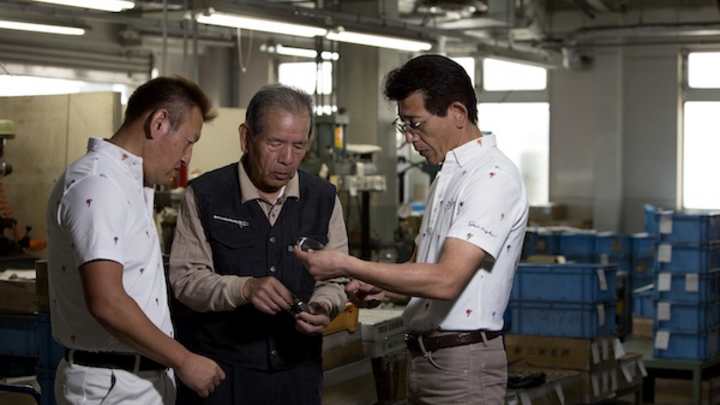The mastery of Miura

The Japanese term for one of a kind is yuiitsu muni.
That description is apropos for Japan-based Miura Golf.
Ever since Katsuhiro Miura started molding club irons — harkening to the days of Sam Snead and Ben Hogan — his undeniable imprint has been left on golf. Pioneer, innovator, trailblazer, fill-in-the-Thesaurus blank all apply.
A world-renowned craftsman, the 76-year-old Miura began hand-making irons in 1957 using soft steel. Twenty years later he was able to launch Miura Golf and confidently boast of the world’s finest forged wedges and irons. Forged clubs date back to how metal clubs were constructed in their early inception.
Some things in life simply ooze style and high-end quality. Lamborghinis, Rolexes and Versace come to mind. Miura Golf has marketed its irons as a golf standard for hand-made clubs.
“There are fans grasping for anything and everything Miura,” said Miura Golf chief operating officer Bill Holowaty.
Including putters.
A few months ago the company introduced the KM-009, a new putter design made of milled mild steel. The blade-style putter has a rolled top line and tapered heel that makes it easier to square to the putting line. What’s more, the face is forgiving and produces an impact strike that creates solid feel with control. The putter went to market for $400 retail and can be customized through a dealer network.
Admittedly so, a putter is a step away from Miura Golf’s bread-and-butter line of wedges and irons. It, however, keeps the company diversified.
“Although putters aren’t our core focus,” said Miura Golf president Hoyt McGarity, “the Miura family has never attached their name to any product that did not live up to their extremely high standards.”
That might be an understatement.
Before stepping down as president five years ago and now serving as chairman, Miura oversaw more than 10 product series. His meticulousness and stringent approval process assured that every club left its Himeji, Japan factory just as he intended. One bad club, he felt, could destroy credibility.
Miura is still involved with the company but has ceded more control to his sons, Shinei and Yoshitaka.
“His creativity, his influence and guidance has never been stronger,” said Holowaty.
To this day, each Miura Golf club is hand crafted and must adhere to a stringent approval process. [Photo: Miura Golf]
Each club continues to be hand crafted. None are ever mass produced. Special forging techniques assure that the grain of the steel in each cub will be fine and uniform, lending to the “Miura feel.” The theory is that the good, accomplished golfer will gravitate toward the company’s clubs.
That said, Miura has always been the type of innovator who shies away from notoriety. When he decided to step down as president, he hand-picked younger son Shinei Muira to assume control. Yoshitaka Miura had more interest in becoming an artisan and followed in his father’s footsteps. Both are tasked with overseeing the company’s evolution.
“My focus has been how to make each golf club both beautiful and clean,” said Yoshitaka Miura in a documentary featured on the company’s website. “Each day, right next to me, is the master who is also my mentor and my teacher.”
For Miura, a first cousin of legendary Japanese sword-maker Hattori Hanzo, his mantra has not changed dating to the early days when his hands molded the first club. After all, in many respects, he patterned club-making similarly to how samurai swords were forged hundreds of years ago.
In this case, it’s all about an unending quest to build the perfect club.
“Our desire was to always make something elegant and refined to create something beautiful with the highest degree of precision,” said the elder Miura. In the golf industry, manufacturers don’t do that anymore. Except for us.”
THE ESSENTIALS
Website:www.miuragolf.com
Facebook:@MiuraGolf
Instagram:@miuragolf
Twitter:@MiuraGolfInc
Ken Klavon was the online editor and a senior writer at the U.S. Golf Association for 12 years. He has covered golf for 22 years.
Email:ken_klavon@yahoo.com
Twitter:@Ken_Klavon
